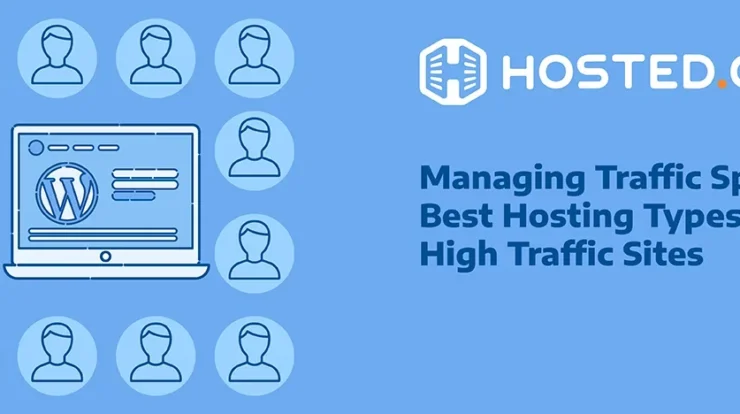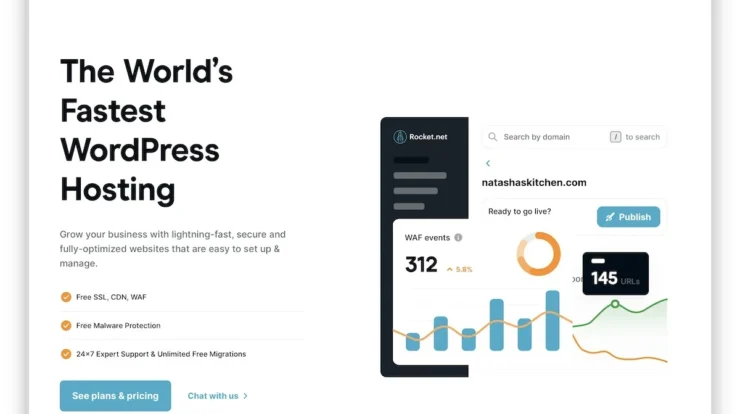
Modern applications rely heavily on robust APIs, making their hosting infrastructure a critical component for success.
Delivering a seamless user experience necessitates a scalable and high-performance API hosting solution that can handle fluctuating demands.
Choosing the optimal hosting platform for high-traffic APIs is paramount to ensuring availability, speed, and reliability, directly impacting application performance and user satisfaction.
As applications grow, the volume of requests to the API increases, demanding a hosting environment equipped to manage these peaks without sacrificing response times or functionality.
Finding the right API hosting solution, often overlooked by developers focused on application logic, is an essential aspect of application deployment.
This critical choice can be the difference between a smooth, responsive application and a frustratingly slow or unreliable one, leading to lost users and a diminished brand image.
Scalability, uptime, and low latency are crucial metrics when evaluating best hosting for high traffic api solutions.
Selecting the best hosting for high traffic api is a multifaceted decision requiring careful consideration of various factors. These factors include load balancing strategies, server configuration, network bandwidth, and the overall architecture of the hosting platform.
This article delves into the key considerations for choosing the ideal hosting platform, examining various providers and their capabilities in handling high-volume API requests.
Understanding the intricacies of high-traffic API hosting allows developers to make informed decisions that support long-term application growth and stability.
By examining crucial benchmarks and comparative performance analyses, this guide will illuminate the path to optimizing your APIs and ensuring sustained success in the face of growing user demands.
Scalability and Performance in High-Traffic API Hosting
A fundamental aspect of selecting the best hosting for high-traffic APIs is understanding the imperative need for scalability.
High-volume API requests necessitate a hosting solution that can accommodate fluctuating traffic patterns, ensuring responsiveness and optimal performance.
The architecture of the hosting platform directly impacts the ability to handle surges in traffic without compromising the API’s response times.
Scalability features, such as automated horizontal scaling and load balancing, are crucial components for a robust API hosting solution, optimizing performance during periods of peak demand.
Efficient load balancing, a key characteristic of high-performance hosting, distributes incoming API requests across multiple servers, preventing bottlenecks and maintaining consistent response times.
This distribution of traffic is critical to upholding the reliability and availability of the API, a key factor in user experience and application success.
Choosing a hosting provider with a proven track record of handling large volumes of API traffic is essential for applications with significant growth potential.
The capability to seamlessly scale resources up or down as needs change is a critical factor in the cost-effectiveness and long-term sustainability of the API hosting solution.
For high-traffic APIs, features like elastic scaling and serverless functions can offer dynamic resource allocation, further optimizing the hosting environment.
API performance benchmarks and real-world usage case studies provide valuable insights into the ability of a hosting provider to handle anticipated traffic spikes.
A robust API hosting solution must seamlessly adapt to these demands to maintain responsiveness and reliability, ensuring a positive user experience.
Evaluating the hosting provider’s capacity to handle anticipated API traffic volumes and future scaling requirements is key to selecting the optimal solution for high-traffic APIs.
Measuring response times and latency under varying load conditions provides critical data to assess the hosting environment’s capacity.
Evaluating the ability to handle high traffic load is not merely a technical detail but also a significant factor in application performance and user satisfaction.
Ultimately, a scalable and high-performance hosting infrastructure, fundamental to best hosting for high-traffic APIs, is crucial for ensuring seamless application operation and a positive user experience.
Scalability and Performance in High-Traffic API Hosting
A fundamental aspect of selecting the best hosting for high-traffic APIs is understanding the imperative need for scalability. This crucial characteristic allows the hosting platform to handle fluctuating traffic patterns, ensuring responsiveness and optimal performance.
High-volume API requests necessitate a hosting solution that can adapt to the demands of unpredictable peaks and valleys in user activity. The hosting environment must be capable of managing these surges without compromising the API’s response times or overall functionality.
The architecture of the hosting platform directly impacts its ability to effectively handle unexpected surges in traffic. A well-designed platform leverages strategies to distribute incoming requests, preventing bottlenecks and ensuring consistent response times.
Critical features of a robust API hosting solution include automated horizontal scaling and load balancing. These features optimize performance during periods of peak demand, allowing the system to efficiently allocate resources based on real-time needs.
Efficient load balancing is a key characteristic of high-performance hosting. This mechanism distributes incoming API requests across multiple servers, preventing bottlenecks and maintaining consistent response times. It is a critical component for managing the demands of high-traffic APIs, ensuring a seamless user experience.
Choosing a platform with robust scaling capabilities is paramount for ensuring the long-term viability of an application reliant on a high-traffic API. A scalable solution allows an API to gracefully handle increasing demand, preventing performance degradation and maintaining user satisfaction as the application’s usage expands.
Scalability is not just about accommodating current traffic levels; it’s about preparing for future growth. A well-architected hosting solution anticipates and adapts to the ever-increasing demands on the API, ensuring that the application remains responsive and reliable as it evolves.
The performance characteristics of a hosting platform directly correlate to the user experience. Fast response times and consistent performance are essential elements for high-traffic APIs, underpinning a positive user interaction with the application.
In addition to scalability, the reliability of the hosting environment plays a significant role. APIs must consistently deliver reliable data access for applications, requiring a hosting provider with a proven track record of uptime and availability. This reliability is critical to maintaining user trust and confidence in the application’s functionality.
Modern applications heavily reliant on high-traffic APIs necessitate a hosting solution that prioritizes both scalability and performance. The correct hosting strategy enables developers to concentrate on application logic and features, without worrying about the underlying infrastructure’s capacity to handle the traffic.
Scalability and Performance for High API Traffic
Scalability is paramount for a high-traffic API, ensuring consistent performance under increasing load.
A robust hosting solution must accommodate substantial API requests without compromising speed or reliability.
This hinges on the hosting provider’s capacity to dynamically adjust resources, such as CPU, memory, and network bandwidth, in response to fluctuating demand.
This dynamic adjustment is crucial to prevent performance bottlenecks and ensure the API remains responsive to users, even during peak usage periods.
A hosting platform that lacks this scalability feature will struggle to maintain service levels, potentially leading to decreased user satisfaction and increased latency during periods of high API usage.
Choosing a hosting provider with a proven track record of managing high volumes of API requests is essential for maintaining a top-tier user experience. This includes robust load balancing strategies.
Load balancing distributes incoming API traffic across multiple servers, preventing overload on any single server.
A well-implemented load balancing system for hosting ensures seamless and consistent API performance, even during surges of requests.
The best hosting platforms for high-traffic APIs utilize technologies like clustered server environments and content delivery networks (CDNs).
Clustered server environments allow API requests to be distributed across multiple machines, effectively scaling capacity and ensuring greater availability.
Furthermore, utilizing a CDN caches static content, like API documentation or image resources, closer to users, reducing latency and improving overall response time.
Modern APIs require the ability to handle immense traffic fluctuations, making scalability a critical consideration for selecting the optimal hosting solution.
A reliable, scalable hosting environment is fundamental to the success of a high-traffic API, enabling it to operate smoothly under various conditions.
Consequently, choosing a hosting solution with a robust scalability plan and proven experience in handling high API traffic is crucial to maintain an excellent user experience.
This will contribute significantly to the overall performance and reliability of the API, directly impacting user satisfaction.
The selection process for an optimal hosting provider must heavily consider its capacity to deliver reliable, scalable, and high-performing solutions, a pivotal factor to keep in mind for high-volume API usage.
Robust scalability features are crucial for sustaining high-volume API traffic and maintaining consistent performance levels—an essential ingredient for success in this realm.
In the context of high-traffic APIs, scalability is not merely an option but a foundational need, requiring a dedicated and robust hosting solution.
High-traffic APIs demand hosting providers that can offer seamless scalability, which is critical for maintaining consistent response times and avoiding performance bottlenecks.
Scalability and Performance for High API Traffic
A crucial aspect of choosing the best hosting for high-traffic APIs is its inherent scalability and performance capabilities.
Scalability, in this context, refers to the hosting platform’s ability to handle increasing volumes of requests without significant performance degradation as the API’s user base and traffic grow.
High-performing hosting solutions are designed to distribute the workload across multiple servers, ensuring that no single server becomes overwhelmed under heavy load.
This distributed architecture, fundamental to effective API hosting, is a cornerstone of ensuring smooth operation and responsiveness to the user requests.
Essential features that underpin this scalable performance include load balancing, redundant storage, and robust network infrastructure.
Load balancing intelligently distributes incoming requests across multiple servers, preventing bottlenecks and maintaining consistent API response times.
Redundant storage ensures data availability and fault tolerance, even in the event of server failures, crucial for a high-traffic API that demands uninterrupted service.
A fast and reliable network is paramount to achieving optimal performance. This translates to reduced latency and quicker response times for API users.
Modern cloud-based hosting platforms often excel in this area, offering scalable computing resources that can be easily adjusted to accommodate fluctuations in traffic.
When selecting a hosting solution for a high-traffic API, scrutinize the scalability metrics and performance guarantees provided by the provider to confirm its ability to support expected future API traffic demands.
This includes assessing factors like the platform’s capacity to handle concurrent requests, response time under load, and its ability to automatically scale resources as traffic increases.
Ultimately, a scalable and high-performance hosting platform is essential to prevent API downtime, ensure user satisfaction, and contribute to a positive user experience for applications relying on the API.
The right hosting solution for a high-traffic API will maintain responsiveness and dependability under various conditions, including peak demand from clients.
Choosing the right hosting solution for a high-traffic API is paramount for ensuring optimal performance, scalability, and reliability.
The discussed factors – bandwidth, server response times, security protocols, and cost-effectiveness – directly impact user experience and the overall success of your application.
Failing to select appropriate hosting for high-traffic APIs can lead to a degraded user experience, increased latency, and even service disruptions, ultimately hindering application growth and revenue generation.
This underscores the critical need to prioritize selecting the best hosting for high traffic APIs, considering the specific demands and projected traffic of your application. Proper selection ensures your API remains accessible, responsive, and secure under heavy loads.
Ultimately, the best hosting for high traffic APIs is not a one-size-fits-all solution. Careful evaluation of available options and a meticulous understanding of your API’s specific requirements will lead to a tailored hosting strategy that delivers optimal performance, maximizes efficiency, and facilitates future growth, ensuring your application handles high traffic reliably and efficiently. This, in essence, demonstrates the vital role of the right hosting solution in scaling your APIs for success.






